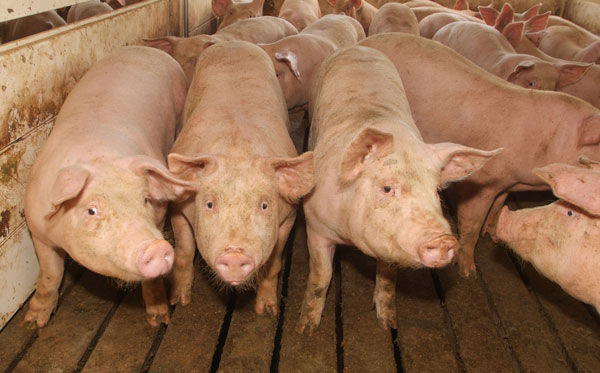African Swine Fever is a pig disease that has U.S. pork producers worried. If it should come to the U.S., beef producers will likely suffer, too.
November 1, 2018

By Brenda Boetel
African Swine Fever is a new disease that has pork producers worldwide rattled and concerned. Beef producers in the U.S. have probably paid scant attention to the news surrounding this epidemic, but perhaps it’s time to watch the news a little more closely.
Why? The answer lies in trade and competitive meat prices.
African Swine Fever (ASF) is a highly contagious disease with no known vaccine. Incidences of the fever have been reported in China, Belgium, Poland, Japan and other countries. Backyard operations are not the only enterprises vulnerable to this disease as a couple weeks ago it was found in a commercial operation of 20,000 pigs.
Although wild hogs have facilitated some of the disease spread, the most likely cause of the transcontinental jump is attributed to human actions and the transportation of meat products between countries. The very real concern is what will happen if/when it comes to the U.S.
Until recently, Poland was able to export pork from certain regions. Belgium is still able to export pork from certain regions. This concept of regionalization is important as it would allow trade from non-infected regions of a country to continue.
Given that the U.S. will produce over 26 billion pounds of pork in 2018 and over 22% will be exported, an incident of ASF in the U.S. would be challenging with regionalization and devastating without regionalization. Should the U.S. become infected with ASF, the impact on pork prices would be severe, even if we can keep some of our export trade with regionalization. The lower pork prices would also negatively impact other animal protein products.
Regionalization can work well, provided the transportation of swine between the infected and non-infected regions can be stopped. Unfortunately, as is the case in China, this transportation wasn't stopped.
China, the world's largest producer of pork products, had eight provinces reporting ASF cases at the end of September. China has approximately 433 million pigs, about 5.9 times that of the U.S. Approximately 80% of their pigs face movement restrictions.
The supply/demand structure in the different regions of China has created large price spreads between the different regions. These price spreads will likely continue to promote the illegal trade between these different regions and propagate the spread of the disease in China.
The U.S. produces approximately 32% of the world pork exports. U.S. pork export quantities have increased in 2018, although prices have not held up as well.
One country where U.S. export quantities have decreased steadily since April 2018 is China. China imports approximately 26% of the world trade, and in September 2018, China increased pork imports by 8.4% over September 2017.
Yet, volume of U.S. pork exports to China and Hong Kong are down 9% from 2017. Given the African Swine Fever issues in China and the increasing Chinese demand for pork, one can assume the decrease in U.S. exports to China is related to tariff issues.
All the pork exports on the international market would not be able to meet the entire pork demands of China. Yet, even with the lower Chinese production because of ASF, U.S. exports to China have decreased in 2018. Trade negotiations may play a bigger role soon.
ASF is an animal disease that is specific to pork producers, yet U.S. cattle producers need to be aware of any new developments. The incidence of ASF in China has both the potential to increase U.S. pork exports, if we can work out a trade agreement with China to lower tariffs on U.S. pork, while also providing huge risk should ASF make the jump to the U.S.
Cattle producers need to pay attention as significant changes in pork prices will impact beef prices and eventually cattle prices.
Brenda Boetel is professor and Extension economist in the Department of Agricultural Economics, University of Wisconsin-River Falls. This article originally appeared in In the Cattle Markets, the Livestock Marketing Information Center’s weekly newsletter.
You May Also Like



